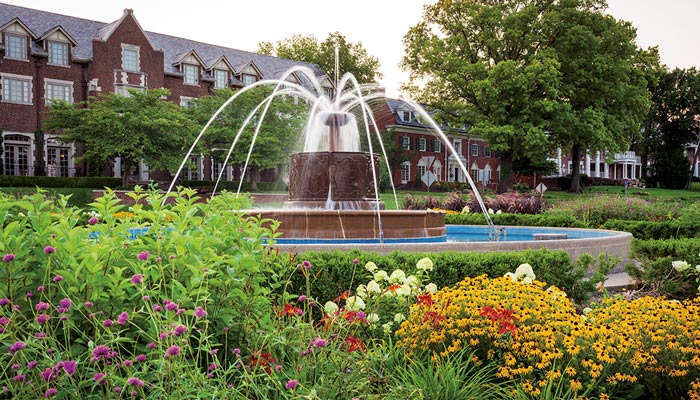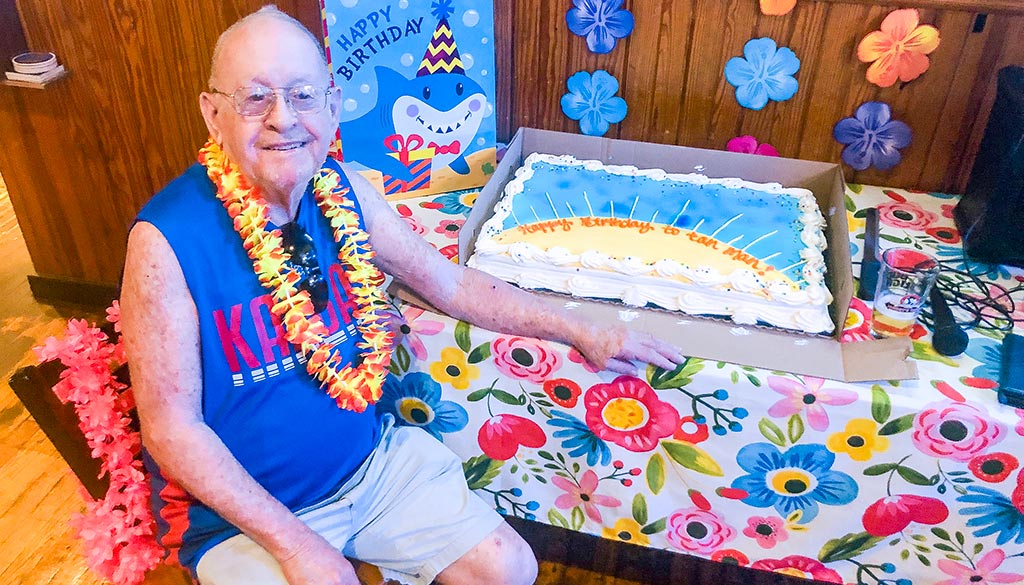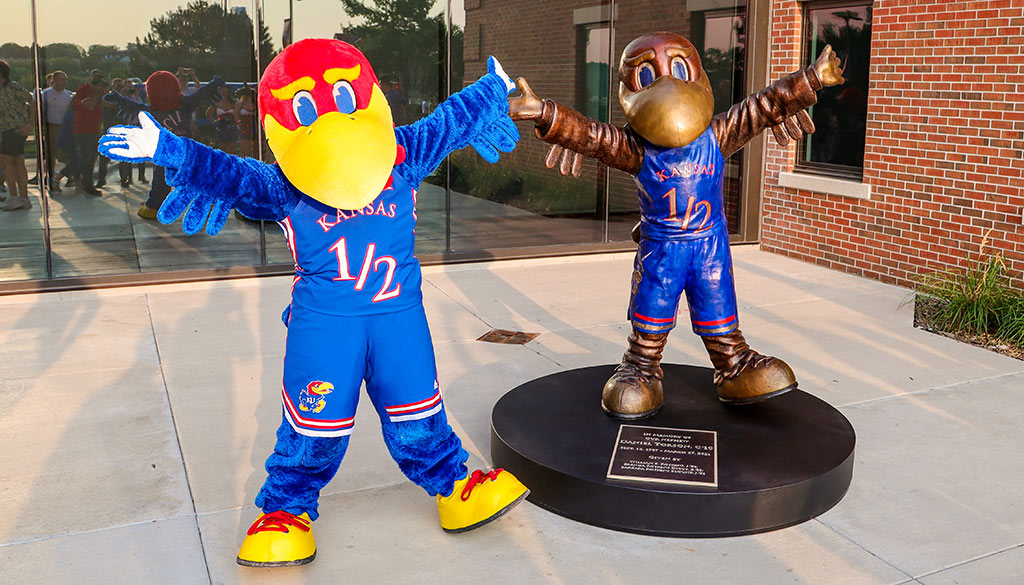Renovations underway to renew beloved KU campus sites
Potter Lake, the Campanile and the Chi Omega Fountain are among the features getting a refresh.
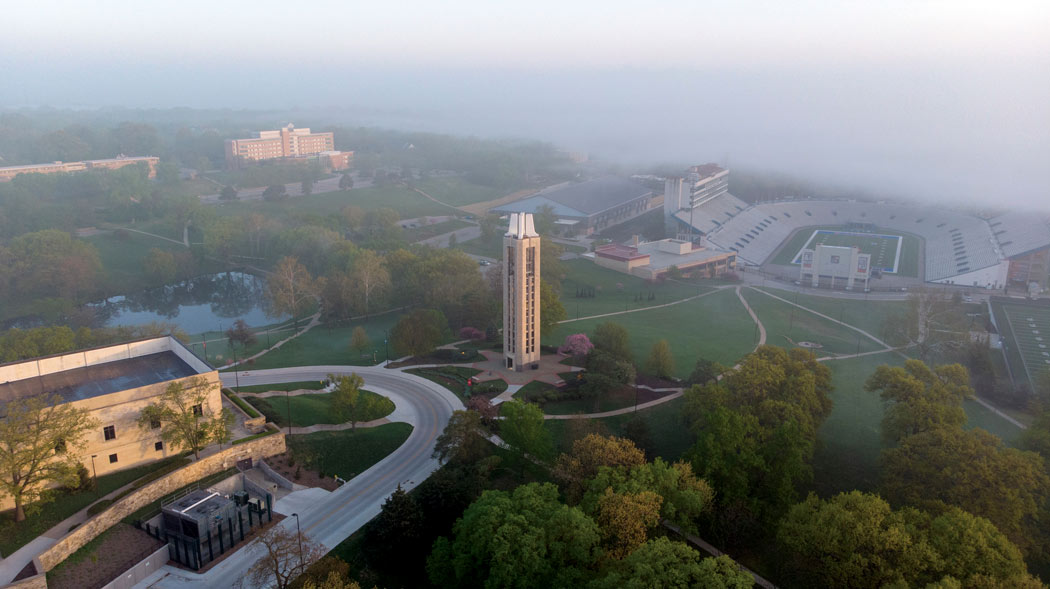
Three iconic Mount Oread landmarks—Potter Lake, the Campanile and the Chi Omega Fountain, plus Spencer Research Library’s north plaza—are all undergoing restoration projects that are likely to last through 2025 Commencement or, in some cases, beyond.
Memorial Drive was closed the entire summer for separate crews to work on both the research library’s underappreciated scenic overlook, which required a rebuild, and the 72-year-old Memorial Campanile & Carillon, where workers excavated timeworn landscaping and pavement around the base.
Once restored, the Campanile’s apron—which has long shown the effects of its heavy traffic and years of service—will sparkle anew, especially with modern lighting systems that are also part of the restoration project. Work will then proceed 120 feet skyward, as workers tend to eroding masonry and desperately needed electrical upgrades.
Potter Lake was dredged in late spring and early summer; work has resumed on the shore edge, clearing the spillway under the small stone bridge and capping the disused pipe that once fed water from the stone pump house still perched under the north berm. That stone structure will remain, because removing it could weaken the dam. Rejuvenated landscaping is scheduled for installation next spring, and officials hope that the budget—already pushing $1 million—might allow for a boat launch.
University Architect Mark Reiske, a’86, says his intention is to have all work along Memorial Drive fully completed in time for the fall 2025 grand opening of the new football stadium—a massive construction site whose progress Reiske and his campus construction colleagues monitor daily.
On a tighter timeline is the rebuild of the Chi Omega Fountain, which faces a hard deadline of May 2025—although Reiske would prefer that it be completed in April, since it’s a favored locale for cap-and-gown portraits. The privately funded project, although painful in the short term, has been needed for at least a decade.
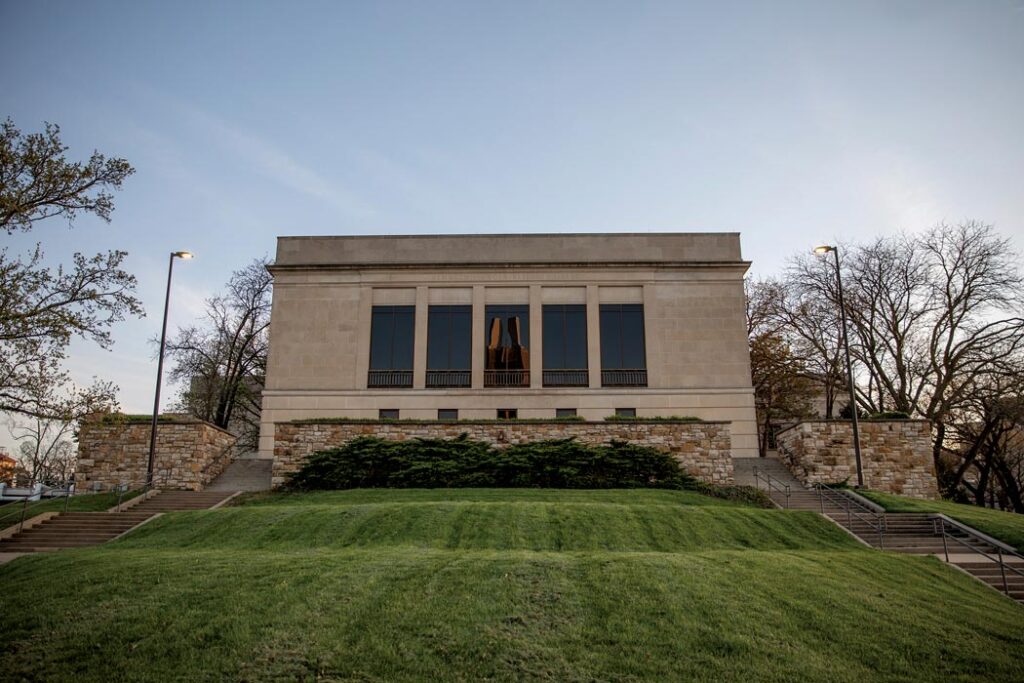
The roundabout site will essentially be razed and rebuilt from the ground up, starting with the main concrete pool, which must be jackhammered out for access to piping that dates to the fountain’s April 1955 dedication. The next layer above the lower pool, fashioned of concrete and stone, will be replaced with 3-foot-long, 18-inch sections of dolomite limestone, an upgrade from the Indiana limestone that long ago began sloughing off in chunks.
Above that middle pool is the site’s signature octagonal metal basket, which featured bas-relief designs significant to the Chi Omega sorority. The original was removed in August by Kansas City metal artisans, who will cast each panel to create replacement replicas—this time in bronze rather than lead, which leaked badly as it began failing along soldered joints between the panels. Above that basket, the original pineapple topper—which was snatched so early in the fountain’s history that photographic evidence of its existence is difficult to find—will be replaced, along with four new bronze spouts.
“Everything is going to be a lot more durable,” says project designer Lorie Doolittle-Bowman, a’80, of BBN Architects. “I mean, we really want this to last a long, long, long time.”
The new fountain will be fitted with an automatic fill valve, relieving facilities workers from the burden of constantly adding water on hot and windy days. Spray heads and plumbing lines will be replaced, the control vault will be widened for easier maintenance access, and the four planting beds will be reconfigured into a symmetrical layout. Planners hope that funds will allow for widening of both the outer and upper walkways, which have become perilously narrow now that many visitors are preoccupied with snapping cellphone photos.

Doolittle-Bowman has designed so many of Kansas City’s iconic fountains that she was recently appointed to the City of Fountains Foundation, yet this project holds particular significance: She was a member of Chi Omega, and fondly remembers listening to the fountain—and its nocturnal visitors—from the sorority’s old sleeping dorms.
“It was just great to hear that fountain all night,” she recalls, adding with a laugh, “and we could hear every conversation that went on. I don’t know that anybody realized that, but we could.” Although named for the sorority that assisted in its original funding, the Chi Omega Fountain, Doolittle-Bowman acknowledges, is a treasure shared by all Jayhawks.
“All students enjoy it so much,” she says, “and we want that to continue. It’s being designed to carry on that tradition.”
While elements will be added to the middle pool and upper basket to strongly discourage climbing—please, no climbing!—officials acknowledge that splashing about in the lower pool will surely continue, by people and pooches alike.
“I don’t know that there would be a KU graduate since its dedication for whom that fountain wouldn’t be a meaningful memory,” Reiske says. “We have iconic buildings, but where is there a more iconic site element? I don’t think we have one.”
When they presented ideas for the latest campus master plan, consultants begged KU to redesign current outdoor sites—notably Wescoe Beach—to encourage all Jayhawks to regularly gather and celebrate the joys of our unique hilltop home.
In fact, such a site already exists.
“That’s exactly right,” Reiske says. “It’s a nice place. It’s sunny there when the sun’s out, and the water is cool because it’s constantly circulating. We’re never going to keep people out of that fountain, and probably shouldn’t. It’s just a shame we can’t replicate that energy in larger areas.”
Chris Lazzarino, j’86, is associate editor of Kansas Alumni magazine.
Campanile photo by Tim Seley/KU Marketing
Spencer Research Library photo by Meg Kumin/KU Marketing
Chi Omega Fountain photo by Steve Puppe
/
